Serving Fountain Valley and Orange County communities for over 35 years. (714) 343-9294 MICAH STOVALL #DRE01240489 Real Estate
Real Estate Just Listed Today in Fountain Valley CA
-
$575,000
17200 Newhope Street #217
Fountain Valley, CA -
$419,999
17200 Newhope Street #109
Fountain Valley, CA -
$659,990
17168 Newhope #222
Fountain Valley, CA -
$1,435,000
18016 Roch Court
Fountain Valley, CA -
$1,550,000
18021 Roch Court
Fountain Valley, CA -
$1,500,000
9429 El Valle Ave
Fountain Valley, CA -
$1,598,000
8803 Hummingbird Avenue
Fountain Valley, CA -
$755,000
17200 Newhope St #23
Fountain Valley, CA -
$2,295,000
17413 Siena Lane
Fountain Valley, CA -
$1,590,000
9808 Sturgeon Ave
Fountain Valley, CA
Lot Size2.55 ac
Home Size1,040 sqft
Beds2 Beds
Baths2 Baths
Lot SizeN/A
Home Size572 sqft
Beds1 Bed
Baths1 Bath
Lot SizeN/A
Home Size1,112 sqft
Beds2 Beds
Baths2 Baths
Lot Size3,315 sqft
Home Size1,811 sqft
Beds3 Beds
Baths2.5 Baths
Lot Size3,673 sqft
Home Size1,920 sqft
Beds4 Beds
Baths3.5 Baths
Lot Size7,201 sqft
Home Size1,875 sqft
Beds3 Beds
Baths2 Baths
Lot Size7,201 sqft
Home Size1,926 sqft
Beds3 Beds
Baths3 Baths
Lot Size6,277 sqft
Home Size1,680 sqft
Beds2 Beds
Baths2 Baths
Lot Size5,951 sqft
Home Size3,408 sqft
Beds4 Beds
Baths4 Baths
Lot Size7,506 sqft
Home Size1,690 sqft
Beds4 Beds
Baths2 Baths
-
Lot Size2.55 ac
Home Size1,040 sqft
Beds2 Beds
Baths2 Baths
-
Lot SizeN/A
Home Size572 sqft
Beds1 Bed
Baths1 Bath
-
Lot SizeN/A
Home Size1,112 sqft
Beds2 Beds
Baths2 Baths
-
Lot Size3,315 sqft
Home Size1,811 sqft
Beds3 Beds
Baths2.5 Baths
-
Lot Size3,673 sqft
Home Size1,920 sqft
Beds4 Beds
Baths3.5 Baths
-
Lot Size7,201 sqft
Home Size1,875 sqft
Beds3 Beds
Baths2 Baths
-
Lot Size7,201 sqft
Home Size1,926 sqft
Beds3 Beds
Baths3 Baths
-
Lot Size6,277 sqft
Home Size1,680 sqft
Beds2 Beds
Baths2 Baths
-
Lot Size5,951 sqft
Home Size3,408 sqft
Beds4 Beds
Baths4 Baths
-
Lot Size7,506 sqft
Home Size1,690 sqft
Beds4 Beds
Baths2 Baths
-
$575,000
17200 Newhope Street #217
Fountain Valley CA Real Estate with the Largest Lots
-
$575,000
17200 Newhope Street #217
Fountain Valley, CA -
$419,999
17200 Newhope Street #109
Fountain Valley, CA -
$659,990
17168 Newhope #222
Fountain Valley, CA -
$1,435,000
18016 Roch Court
Fountain Valley, CA -
$1,550,000
18021 Roch Court
Fountain Valley, CA -
$1,500,000
9429 El Valle Ave
Fountain Valley, CA -
$1,598,000
8803 Hummingbird Avenue
Fountain Valley, CA -
$755,000
17200 Newhope St #23
Fountain Valley, CA -
$2,295,000
17413 Siena Lane
Fountain Valley, CA -
$1,590,000
9808 Sturgeon Ave
Fountain Valley, CA
Lot Size2.55 ac
Home Size1,040 sqft
Beds2 Beds
Baths2 Baths
Lot SizeN/A
Home Size572 sqft
Beds1 Bed
Baths1 Bath
Lot SizeN/A
Home Size1,112 sqft
Beds2 Beds
Baths2 Baths
Lot Size3,315 sqft
Home Size1,811 sqft
Beds3 Beds
Baths2.5 Baths
Lot Size3,673 sqft
Home Size1,920 sqft
Beds4 Beds
Baths3.5 Baths
Lot Size7,201 sqft
Home Size1,875 sqft
Beds3 Beds
Baths2 Baths
Lot Size7,201 sqft
Home Size1,926 sqft
Beds3 Beds
Baths3 Baths
Lot Size6,277 sqft
Home Size1,680 sqft
Beds2 Beds
Baths2 Baths
Lot Size5,951 sqft
Home Size3,408 sqft
Beds4 Beds
Baths4 Baths
Lot Size7,506 sqft
Home Size1,690 sqft
Beds4 Beds
Baths2 Baths
-
Lot Size2.55 ac
Home Size1,040 sqft
Beds2 Beds
Baths2 Baths
-
Lot SizeN/A
Home Size572 sqft
Beds1 Bed
Baths1 Bath
-
Lot SizeN/A
Home Size1,112 sqft
Beds2 Beds
Baths2 Baths
-
Lot Size3,315 sqft
Home Size1,811 sqft
Beds3 Beds
Baths2.5 Baths
-
Lot Size3,673 sqft
Home Size1,920 sqft
Beds4 Beds
Baths3.5 Baths
-
Lot Size7,201 sqft
Home Size1,875 sqft
Beds3 Beds
Baths2 Baths
-
Lot Size7,201 sqft
Home Size1,926 sqft
Beds3 Beds
Baths3 Baths
-
Lot Size6,277 sqft
Home Size1,680 sqft
Beds2 Beds
Baths2 Baths
-
Lot Size5,951 sqft
Home Size3,408 sqft
Beds4 Beds
Baths4 Baths
-
Lot Size7,506 sqft
Home Size1,690 sqft
Beds4 Beds
Baths2 Baths
-
$575,000
17200 Newhope Street #217
Largest Price Reduced Real Estate in Fountain Valley CA
-
$575,000
17200 Newhope Street #217
Fountain Valley, CA -
$419,999
17200 Newhope Street #109
Fountain Valley, CA -
$659,990
17168 Newhope #222
Fountain Valley, CA -
$1,435,000
18016 Roch Court
Fountain Valley, CA -
$1,550,000
18021 Roch Court
Fountain Valley, CA -
$1,500,000
9429 El Valle Ave
Fountain Valley, CA -
$1,598,000
8803 Hummingbird Avenue
Fountain Valley, CA -
$755,000
17200 Newhope St #23
Fountain Valley, CA -
$2,295,000
17413 Siena Lane
Fountain Valley, CA -
$1,590,000
9808 Sturgeon Ave
Fountain Valley, CA
Lot Size2.55 ac
Home Size1,040 sqft
Beds2 Beds
Baths2 Baths
Lot SizeN/A
Home Size572 sqft
Beds1 Bed
Baths1 Bath
Lot SizeN/A
Home Size1,112 sqft
Beds2 Beds
Baths2 Baths
Lot Size3,315 sqft
Home Size1,811 sqft
Beds3 Beds
Baths2.5 Baths
Lot Size3,673 sqft
Home Size1,920 sqft
Beds4 Beds
Baths3.5 Baths
Lot Size7,201 sqft
Home Size1,875 sqft
Beds3 Beds
Baths2 Baths
Lot Size7,201 sqft
Home Size1,926 sqft
Beds3 Beds
Baths3 Baths
Lot Size6,277 sqft
Home Size1,680 sqft
Beds2 Beds
Baths2 Baths
Lot Size5,951 sqft
Home Size3,408 sqft
Beds4 Beds
Baths4 Baths
Lot Size7,506 sqft
Home Size1,690 sqft
Beds4 Beds
Baths2 Baths
-
Lot Size2.55 ac
Home Size1,040 sqft
Beds2 Beds
Baths2 Baths
-
Lot SizeN/A
Home Size572 sqft
Beds1 Bed
Baths1 Bath
-
Lot SizeN/A
Home Size1,112 sqft
Beds2 Beds
Baths2 Baths
-
Lot Size3,315 sqft
Home Size1,811 sqft
Beds3 Beds
Baths2.5 Baths
-
Lot Size3,673 sqft
Home Size1,920 sqft
Beds4 Beds
Baths3.5 Baths
-
Lot Size7,201 sqft
Home Size1,875 sqft
Beds3 Beds
Baths2 Baths
-
Lot Size7,201 sqft
Home Size1,926 sqft
Beds3 Beds
Baths3 Baths
-
Lot Size6,277 sqft
Home Size1,680 sqft
Beds2 Beds
Baths2 Baths
-
Lot Size5,951 sqft
Home Size3,408 sqft
Beds4 Beds
Baths4 Baths
-
Lot Size7,506 sqft
Home Size1,690 sqft
Beds4 Beds
Baths2 Baths
-
$575,000
17200 Newhope Street #217
Most Expensive Real Estate in Fountain Valley CA
-
$575,000
17200 Newhope Street #217
Fountain Valley, CA -
$419,999
17200 Newhope Street #109
Fountain Valley, CA -
$659,990
17168 Newhope #222
Fountain Valley, CA -
$1,435,000
18016 Roch Court
Fountain Valley, CA -
$1,550,000
18021 Roch Court
Fountain Valley, CA -
$1,500,000
9429 El Valle Ave
Fountain Valley, CA -
$1,598,000
8803 Hummingbird Avenue
Fountain Valley, CA -
$755,000
17200 Newhope St #23
Fountain Valley, CA -
$2,295,000
17413 Siena Lane
Fountain Valley, CA -
$1,590,000
9808 Sturgeon Ave
Fountain Valley, CA
Lot Size2.55 ac
Home Size1,040 sqft
Beds2 Beds
Baths2 Baths
Lot SizeN/A
Home Size572 sqft
Beds1 Bed
Baths1 Bath
Lot SizeN/A
Home Size1,112 sqft
Beds2 Beds
Baths2 Baths
Lot Size3,315 sqft
Home Size1,811 sqft
Beds3 Beds
Baths2.5 Baths
Lot Size3,673 sqft
Home Size1,920 sqft
Beds4 Beds
Baths3.5 Baths
Lot Size7,201 sqft
Home Size1,875 sqft
Beds3 Beds
Baths2 Baths
Lot Size7,201 sqft
Home Size1,926 sqft
Beds3 Beds
Baths3 Baths
Lot Size6,277 sqft
Home Size1,680 sqft
Beds2 Beds
Baths2 Baths
Lot Size5,951 sqft
Home Size3,408 sqft
Beds4 Beds
Baths4 Baths
Lot Size7,506 sqft
Home Size1,690 sqft
Beds4 Beds
Baths2 Baths
-
Lot Size2.55 ac
Home Size1,040 sqft
Beds2 Beds
Baths2 Baths
-
Lot SizeN/A
Home Size572 sqft
Beds1 Bed
Baths1 Bath
-
Lot SizeN/A
Home Size1,112 sqft
Beds2 Beds
Baths2 Baths
-
Lot Size3,315 sqft
Home Size1,811 sqft
Beds3 Beds
Baths2.5 Baths
-
Lot Size3,673 sqft
Home Size1,920 sqft
Beds4 Beds
Baths3.5 Baths
-
Lot Size7,201 sqft
Home Size1,875 sqft
Beds3 Beds
Baths2 Baths
-
Lot Size7,201 sqft
Home Size1,926 sqft
Beds3 Beds
Baths3 Baths
-
Lot Size6,277 sqft
Home Size1,680 sqft
Beds2 Beds
Baths2 Baths
-
Lot Size5,951 sqft
Home Size3,408 sqft
Beds4 Beds
Baths4 Baths
-
Lot Size7,506 sqft
Home Size1,690 sqft
Beds4 Beds
Baths2 Baths
-
$575,000
17200 Newhope Street #217
Most Square Footage in Fountain Valley CA Real Estate
-
$575,000
17200 Newhope Street #217
Fountain Valley, CA -
$419,999
17200 Newhope Street #109
Fountain Valley, CA -
$659,990
17168 Newhope #222
Fountain Valley, CA -
$1,435,000
18016 Roch Court
Fountain Valley, CA -
$1,550,000
18021 Roch Court
Fountain Valley, CA -
$1,500,000
9429 El Valle Ave
Fountain Valley, CA -
$1,598,000
8803 Hummingbird Avenue
Fountain Valley, CA -
$755,000
17200 Newhope St #23
Fountain Valley, CA -
$2,295,000
17413 Siena Lane
Fountain Valley, CA -
$1,590,000
9808 Sturgeon Ave
Fountain Valley, CA
Lot Size2.55 ac
Home Size1,040 sqft
Beds2 Beds
Baths2 Baths
Lot SizeN/A
Home Size572 sqft
Beds1 Bed
Baths1 Bath
Lot SizeN/A
Home Size1,112 sqft
Beds2 Beds
Baths2 Baths
Lot Size3,315 sqft
Home Size1,811 sqft
Beds3 Beds
Baths2.5 Baths
Lot Size3,673 sqft
Home Size1,920 sqft
Beds4 Beds
Baths3.5 Baths
Lot Size7,201 sqft
Home Size1,875 sqft
Beds3 Beds
Baths2 Baths
Lot Size7,201 sqft
Home Size1,926 sqft
Beds3 Beds
Baths3 Baths
Lot Size6,277 sqft
Home Size1,680 sqft
Beds2 Beds
Baths2 Baths
Lot Size5,951 sqft
Home Size3,408 sqft
Beds4 Beds
Baths4 Baths
Lot Size7,506 sqft
Home Size1,690 sqft
Beds4 Beds
Baths2 Baths
-
Lot Size2.55 ac
Home Size1,040 sqft
Beds2 Beds
Baths2 Baths
-
Lot SizeN/A
Home Size572 sqft
Beds1 Bed
Baths1 Bath
-
Lot SizeN/A
Home Size1,112 sqft
Beds2 Beds
Baths2 Baths
-
Lot Size3,315 sqft
Home Size1,811 sqft
Beds3 Beds
Baths2.5 Baths
-
Lot Size3,673 sqft
Home Size1,920 sqft
Beds4 Beds
Baths3.5 Baths
-
Lot Size7,201 sqft
Home Size1,875 sqft
Beds3 Beds
Baths2 Baths
-
Lot Size7,201 sqft
Home Size1,926 sqft
Beds3 Beds
Baths3 Baths
-
Lot Size6,277 sqft
Home Size1,680 sqft
Beds2 Beds
Baths2 Baths
-
Lot Size5,951 sqft
Home Size3,408 sqft
Beds4 Beds
Baths4 Baths
-
Lot Size7,506 sqft
Home Size1,690 sqft
Beds4 Beds
Baths2 Baths
-
$575,000
17200 Newhope Street #217
Least Expensive Real Estate in Fountain Valley CA
-
$575,000
17200 Newhope Street #217
Fountain Valley, CA -
$419,999
17200 Newhope Street #109
Fountain Valley, CA -
$659,990
17168 Newhope #222
Fountain Valley, CA -
$1,435,000
18016 Roch Court
Fountain Valley, CA -
$1,550,000
18021 Roch Court
Fountain Valley, CA -
$1,500,000
9429 El Valle Ave
Fountain Valley, CA -
$1,598,000
8803 Hummingbird Avenue
Fountain Valley, CA -
$755,000
17200 Newhope St #23
Fountain Valley, CA -
$2,295,000
17413 Siena Lane
Fountain Valley, CA -
$1,590,000
9808 Sturgeon Ave
Fountain Valley, CA
Lot Size2.55 ac
Home Size1,040 sqft
Beds2 Beds
Baths2 Baths
Lot SizeN/A
Home Size572 sqft
Beds1 Bed
Baths1 Bath
Lot SizeN/A
Home Size1,112 sqft
Beds2 Beds
Baths2 Baths
Lot Size3,315 sqft
Home Size1,811 sqft
Beds3 Beds
Baths2.5 Baths
Lot Size3,673 sqft
Home Size1,920 sqft
Beds4 Beds
Baths3.5 Baths
Lot Size7,201 sqft
Home Size1,875 sqft
Beds3 Beds
Baths2 Baths
Lot Size7,201 sqft
Home Size1,926 sqft
Beds3 Beds
Baths3 Baths
Lot Size6,277 sqft
Home Size1,680 sqft
Beds2 Beds
Baths2 Baths
Lot Size5,951 sqft
Home Size3,408 sqft
Beds4 Beds
Baths4 Baths
Lot Size7,506 sqft
Home Size1,690 sqft
Beds4 Beds
Baths2 Baths
-
Lot Size2.55 ac
Home Size1,040 sqft
Beds2 Beds
Baths2 Baths
-
Lot SizeN/A
Home Size572 sqft
Beds1 Bed
Baths1 Bath
-
Lot SizeN/A
Home Size1,112 sqft
Beds2 Beds
Baths2 Baths
-
Lot Size3,315 sqft
Home Size1,811 sqft
Beds3 Beds
Baths2.5 Baths
-
Lot Size3,673 sqft
Home Size1,920 sqft
Beds4 Beds
Baths3.5 Baths
-
Lot Size7,201 sqft
Home Size1,875 sqft
Beds3 Beds
Baths2 Baths
-
Lot Size7,201 sqft
Home Size1,926 sqft
Beds3 Beds
Baths3 Baths
-
Lot Size6,277 sqft
Home Size1,680 sqft
Beds2 Beds
Baths2 Baths
-
Lot Size5,951 sqft
Home Size3,408 sqft
Beds4 Beds
Baths4 Baths
-
Lot Size7,506 sqft
Home Size1,690 sqft
Beds4 Beds
Baths2 Baths
-
$575,000
17200 Newhope Street #217
Powered by WordPress. Built on the Thematic Theme Framework. test
Copyright 2025 | Orange County web design



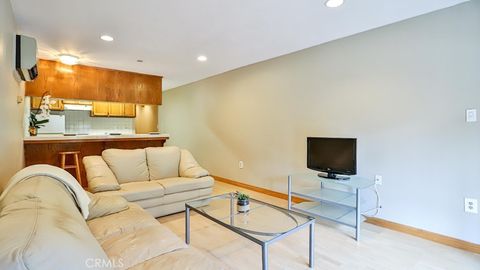
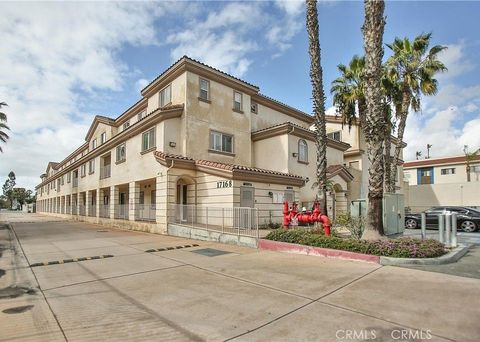
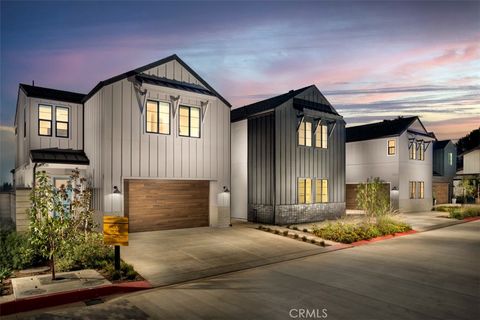
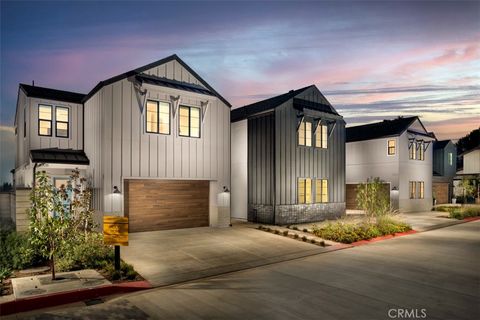
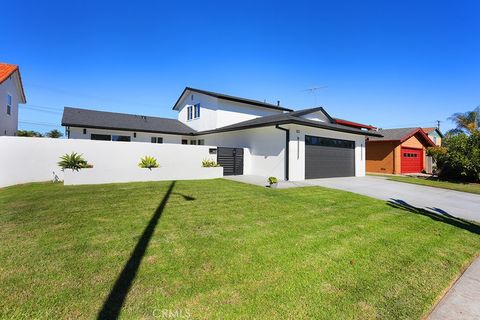
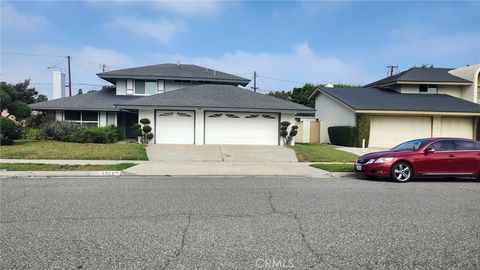

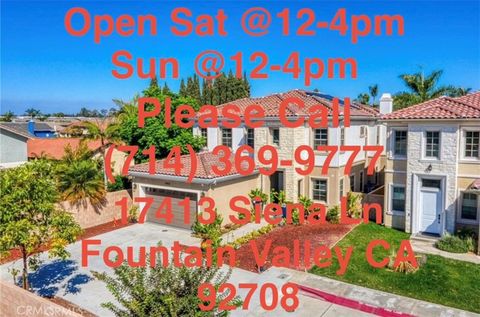

If It Sounds Too Good: Top 6 Mortgage Mistakes
During the 2007-2009 financial crisis, the US economy crumbled because of a problem with mortgage foreclosures. Borrowers allover the nation had trouble paying their mortgages. At the time, eight out of10 borrowers were trying to refinance their mortgages. Even high-end homeowners were having trouble with foreclosures. Why were so many citizens having trouble with their mortgages? Let’s take a look at the biggest mortgage mistakes that homeowners make.
1.Adjustable Rate Mortgages Adjustable rate mortgages seem like a homeowners dream. An adjustable rate mortgage starts you off with a low interest rate for the first two to five years. They allowed you to buy a larger house than you can normally qualify for and have lower payments that you can afford. Well, it doesn’t always work out that way. When housing prices drop, borrowers tend to find that they are unable to refinance their existing loans. This leaves many borrowers facing high mortgage payments that are two to three times their original payments. The dream of homeownership quickly becomes a nightmare.
2. No Down Payment During the subprime crisis, many companies were offering borrowers no-down-payment loans to borrowers. A down payment makes sure that you have some skin in the game. Borrowers who place down a large down payment are much more likely to try everything possible to make their mortgage payments since they do not want to lose their investment. They owe more money than the home is worth. The more a borrower owes, the more likely they are to walk away.
3. Stated Income Loans. Stated Income loans were incredibly popular during the real estate boom prior to the subprime meltdown that began in 2007. A stated income is a loan that requires little to no documentation. The loan is based on the borrower’s stated income, stated assets and stated expenses. Some individuals that received this loan did not even have a job! The trouble starts once the buyer gets in the home. Since the mortgage payments have to be paid with actual income and not stated Income, the borrower is unable to consistently make their mortgage payments. They fall behind on the payments and find themselves facing bankruptcy and foreclosure.
4. Reverse Mortgages. Are reverse mortgages the godsend that people claim that they are? A reverse mortgage is a loan available to senior citizens age 62 and up that uses the equity out of your home to provide you with an income stream. The available equity is paid out to you in a steady stream of payments or in a lump sum like an annuity. Origination fees, mortgage insurance, title insurance, appraisal fees, attorney fees and miscellaneous fees can quickly eat up your equity. The borrower loses full ownership of their home. Since all of the equity will be gone from your home, the bank now owns the home. The family is only entitled to any equity that is left after all of the cash from the deceased’s estate has been used to pay off the mortgage, fees, and interest. The family will have to try to work out an agreement with the bank and make mortgage payments to keep the family home.
5. Longer Amortization .You may have thought that 30 years was the longest time frame that you could get on a mortgage. Are you aware that some mortgage companies are offering loans that run 40 years now? They allow individuals to buy a larger house for much lower payments. A 40-year mortgage may make sense for a young 20-year-old who plans to stay in their home for the next 20 years but it doesn’t make sense for most people. The interest rate on a 40-year mortgage will be slightly higher than a 30 year. This amounts to a whole lot more interest over a 40-year time period, because banks aren’t going to give borrowers extra years to pay off their mortgage without making it up on the back end. These loans always favor the Bank.
6. Exotic Mortgage Products Some homeowners simply did not understand what they were getting themselves into. Lenders came up with all sorts of exotic products that made the dream of home ownership a reality. These loans let borrowers live in a home for a few years and only make interest payments. Name your payment loans let borrowers decide exactly how much they want to pay on their mortgage each month. The catch is that a big balloon principal payment would come due after a certain time period. All of these products are known as negative amortization products. Instead of building up equity, borrowers are building negative equity.
The Bottom Line As you can see, the road to home ownership can be riddled with traps. If you can avoid the traps that many borrowers fell into, then you can keep yourself from financial troubles. If it sounds too good to be true it probably is. It is our hope that we have all learned from our past. We know there were legitimate people did obtain this type of financing.
Source:Investopedia.com